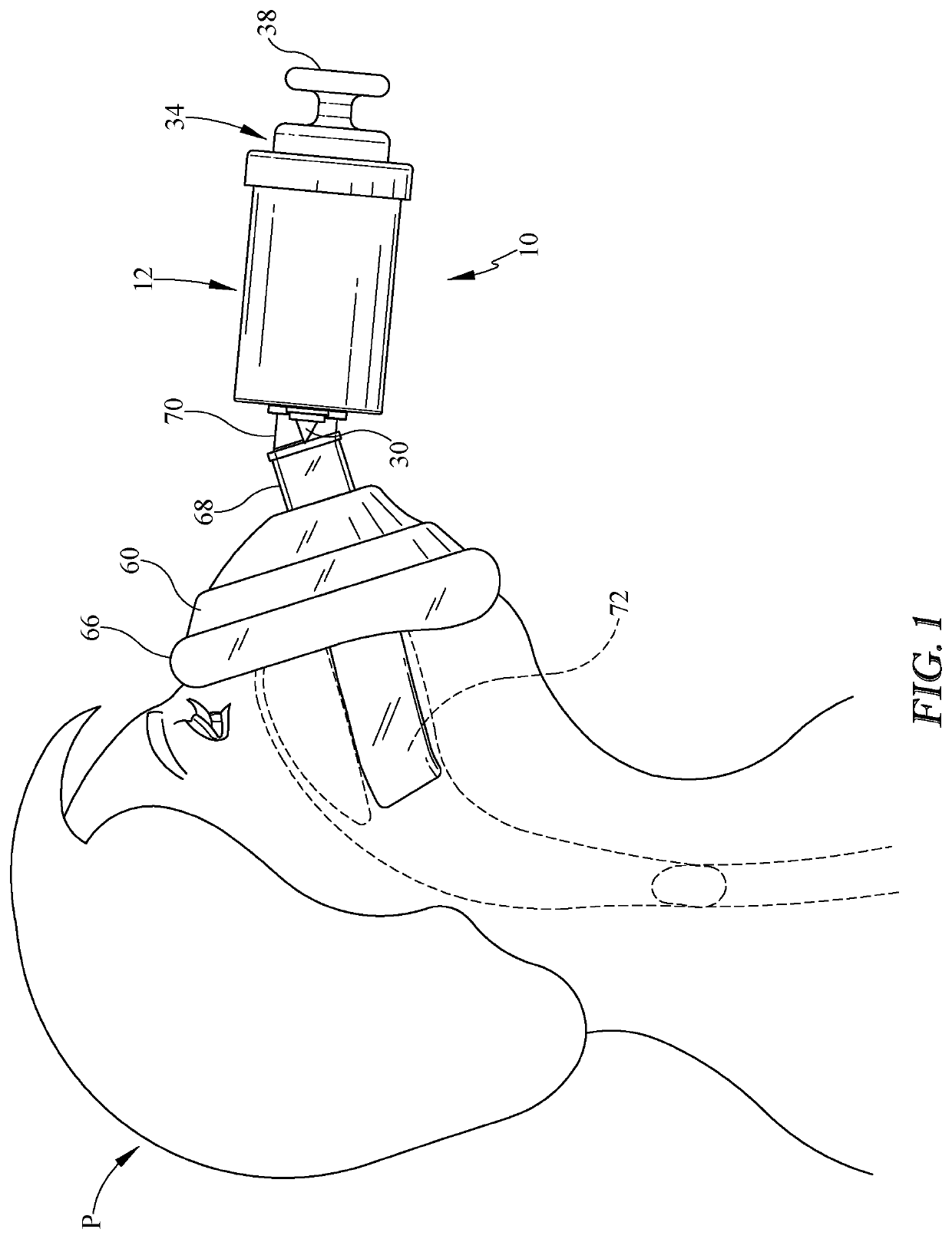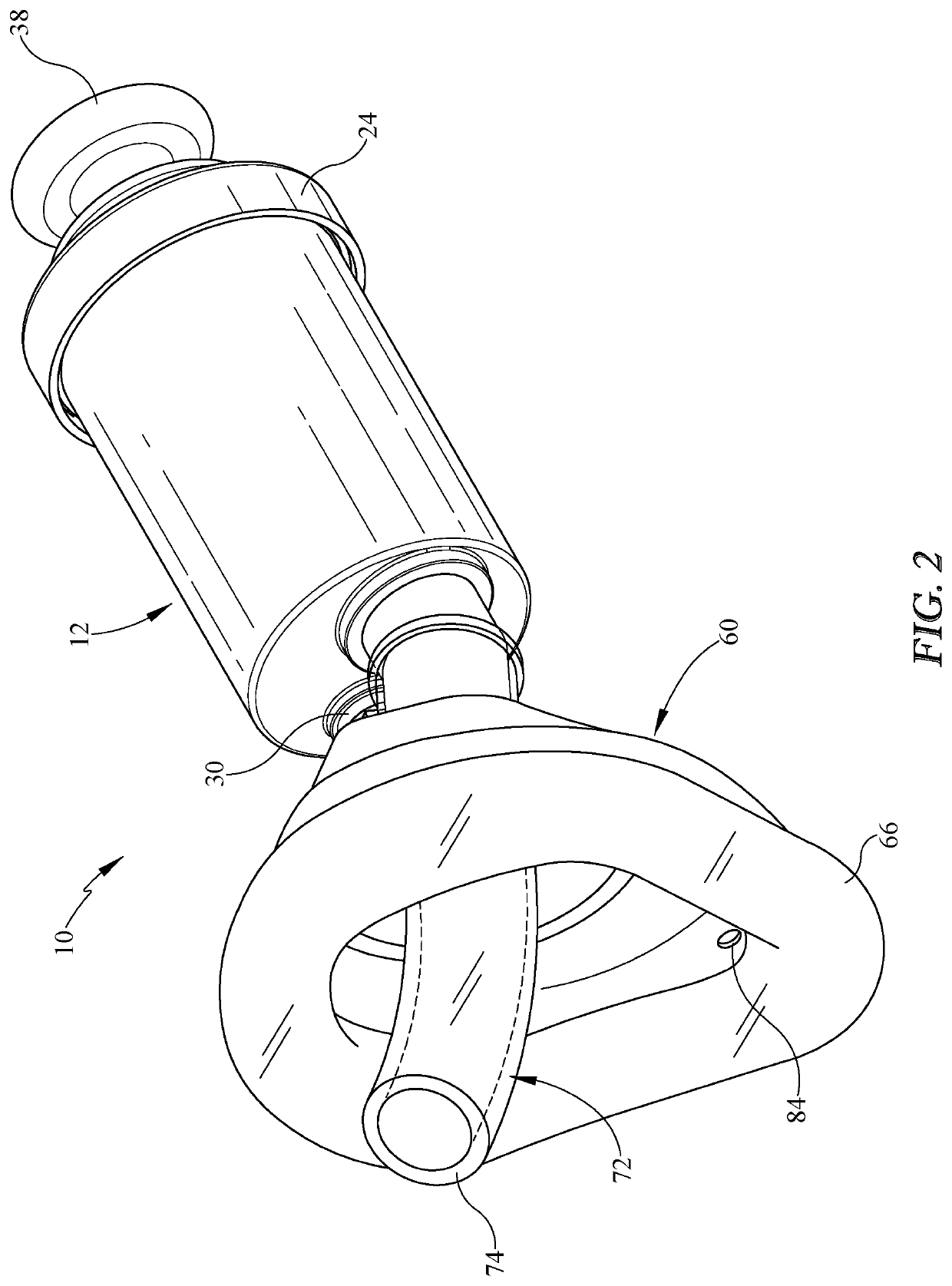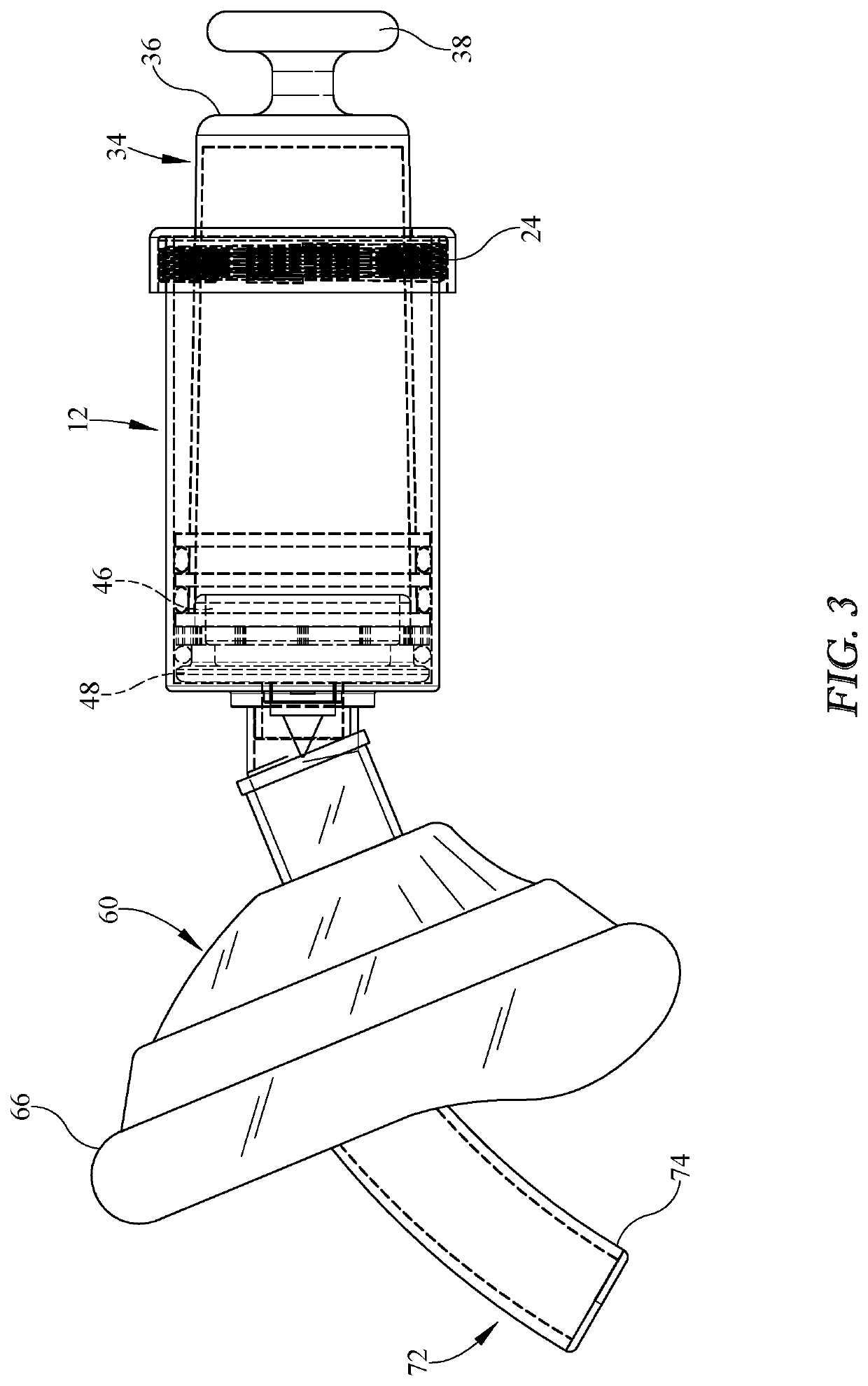Airway assist device
a technology of airway and assist device, which is applied in the field of airway assist device, can solve the problems of choking by parents of young children, unable to keep every small item capable of choking a child out of the child's reach, and children lack the safety diligence of parents, etc., and achieves the effects of simple design and construction, quick deployment, and convenient us
- Summary
- Abstract
- Description
- Claims
- Application Information
AI Technical Summary
Benefits of technology
Problems solved by technology
Method used
Image
Examples
Embodiment Construction
[0016]Referring now to the drawings, it is seen that the airway assist device of the present invention, generally denoted by reference numeral 10, is comprised of a barrel 12 that has an open proximal end 14 having male threading 16 thereon, a distal end 18, and a medial section 20 therebetween, the barrel 12 also having a hollow interior chamber 22. A retainer ring 24 is threadably attached to the proximal end 14 of the barrel 12, the retainer ring 24 having an inwardly directed annular lip 26. An extension 28 extends outwardly from the distal end 18 of the barrel 12, the extension 28 forming an opening via its hollow passageway such that a fluid pathway exists between the interior chamber 22 of the barrel 12 and the exterior of the extension 28. The barrel 12, the retainer ring 22 and the extension 28 are each made from an appropriate plastic or similar material, preferably a bio-acceptable material and the barrel 12 and the extension 28 may be formed as single integral unit.
[0017...
PUM
 Login to View More
Login to View More Abstract
Description
Claims
Application Information
 Login to View More
Login to View More - R&D
- Intellectual Property
- Life Sciences
- Materials
- Tech Scout
- Unparalleled Data Quality
- Higher Quality Content
- 60% Fewer Hallucinations
Browse by: Latest US Patents, China's latest patents, Technical Efficacy Thesaurus, Application Domain, Technology Topic, Popular Technical Reports.
© 2025 PatSnap. All rights reserved.Legal|Privacy policy|Modern Slavery Act Transparency Statement|Sitemap|About US| Contact US: help@patsnap.com



